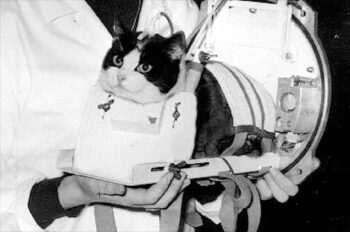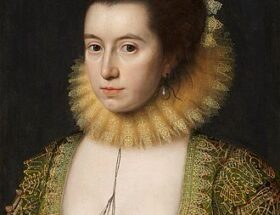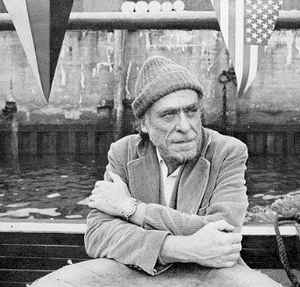
Early life
Charles Lutwidge Dodgson was born on 27 January 1832 in All Saints’ Vicarage at Daresbury, Cheshire. He was the eldest boy and the third child of Charles Dodgson and Frances Lutwidge.
When Charles was 11, his father was given the living of Croft-on-Tees in the North Riding of Yorkshire and the whole family moved to the spacious rectory. This remained their home for the next 25 years.
Charles’s father was an active and highly conservative cleric of the Church of England who later became the Archdeacon of Richmond and involved himself, sometimes influentially, in the intense religious disputes that were dividing the church.
He was high church, inclining toward Anglo-Catholicism, an admirer of John Henry Newman and the Tractarian movement, and did his best to instil such views in his children.
Young Charles was to develop an ambivalent relationship with his father’s values and with the Church of England as a whole.
Education
During his early youth, Charles was educated at home. His “reading lists” preserved in the family archives testify to a precocious intellect: at the age of seven, he was reading books such as The Pilgrim’s Progress.
He also spoke with a stammer, a condition shared by most of his siblings, that often inhibited his social life throughout his years. At the age of twelve he was sent to Richmond Grammar School in Richmond, North Yorkshire.
In 1846, Charles entered Rugby School where he was evidently unhappy, as he wrote some years after leaving:
I cannot say … that any earthly considerations would induce me to go through my three years again … I can honestly say that if I could have been … secure from annoyance at night, the hardships of the daily life would have been comparative trifles to bear.
Charles did not claim he suffered from bullying but cited little boys as the main targets of older bullies at Rugby. Stuart Dodgson Collingwood, who was Charles‘s nephew, wrote that “even though it is hard for those who have only known him as the gentle and retiring don to believe it, it is nevertheless true that long after he left school, his name was remembered as that of a boy who knew well how to use his fists in defence of a righteous cause”.
Academically, though, he excelled with apparent ease. “I have not had a more promising boy at his age since I came to Rugby”, observed mathematics master R. B. Mayor.
Charles left Rugby at the end of 1849 and matriculated at the University of Oxford in May 1850 as a member of his father’s old college, Christ Church. After waiting for rooms in college to become available, he went into residence in January 1851. He had been at Oxford only two days when he received a summons home. His mother had died of “inflammation of the brain” at the age of 47.
His early academic career veered between high promise and irresistible distraction. He did not always work hard but was exceptionally gifted and achievement came easily to him. In 1852, he obtained first-class honours in Mathematics Moderations and was shortly thereafter nominated to a Studentship by his father’s old friend Canon Edward Pusey.
In 1854, he obtained first-class honours in the Final Honours School of Mathematics, standing first on the list, graduating Bachelor of Arts. He remained at Christ Church studying and teaching, but the next year he failed an important scholarship through his self-confessed inability to apply himself to study.
Even so, his talent as a mathematician won him the Christ Church Mathematical Lectureship in 1855, which he continued to hold for the next 26 years. Despite early unhappiness, Charles was to remain at Christ Church, in various capacities, until his death, including that of Sub-Librarian of the Christ Church library.
Involvement with Literature
From a young age, Charles wrote poetry and short stories, contributing heavily to the family magazine Mischmasch and later sending them to various magazines, enjoying moderate success. Between 1854 and 1856, his work appeared in the national publications The Comic Times and The Train, as well as smaller magazines such as the Whitby Gazette and the Oxford Critic.
Most of this output was humorous, sometimes satirical, but his standards and ambitions were exacting. “I do not think I have yet written anything worthy of real publication (in which I do not include the Whitby Gazette or the Oxonian Advertiser), but I do not despair of doing so someday,” he wrote in July 1855. Sometime after 1850, he did write puppet plays for his siblings’ entertainment, of which one has survived: La Guida di Bragia.
In March 1856, he published his first piece of work under the name that would make him famous. A romantic poem called “Solitude” appeared in The Train under the authorship of “Lewis Carroll”. This pseudonym was a play on his real name: Lewis was the anglicised form of Ludovicus, which was the Latin for Lutwidge, and Carroll an Irish surname similar to the Latin name Carolus, from which comes the name Charles.
The transition went as follows: “Charles Lutwidge” translated into Latin as “Carolus Ludovicus”. This was then translated back into English as “Carroll Lewis” and then reversed to make “Lewis Carroll”. This pseudonym was chosen by editor Edmund Yates from a list of four submitted by Dodgson, the others being Edgar Cuthwellis, Edgar U. C. Westhill, and Louis Carroll.
Alice in Wonderland
In 1856, Dean Henry Liddell arrived at Christ Church, bringing with him his young family, all of whom would figure largely in Charles’ life over the following years and would greatly influence his writing career. Charles became close friends with Liddell’s wife Lorina and their children, particularly the three sisters Lorina, Edith and Alice Liddell.
He was widely assumed for many years to have derived his own “Alice” from Alice Liddell: the acrostic poem at the end of Through the Looking-Glass spells out her name in full and there are also many superficial references to her hidden in the text of both books.
It has been noted that Charles himself repeatedly denied in later life that his “little heroine” was based on any real child and he frequently dedicated his works to girls of his acquaintance, adding their names in acrostic poems at the beginning of the text.
The friendship with the Liddell family was an important part of Charles‘ life in the late 1850s and he grew into the habit of taking the children on rowing trips accompanied by an adult friend to nearby Nuneham Courtenay or Godstow.
It was on one such expedition on 4 July 1862 that Charles invented the outline of the story that eventually became his first and greatest commercial success. He told the story to Alice Liddell and she begged him to write it down. Charles after much delay presented her with a handwritten, illustrated manuscript entitled Alice’s Adventures Under Ground in November 1864.
Before this, the family of friend and mentor George MacDonald read his incomplete manuscript and the enthusiasm of the MacDonald children encouraged Charles to seek publication. In 1863, he had taken the unfinished manuscript to Macmillan the publisher, who liked it immediately.
After the possible alternative titles were rejected – Alice Among the Fairies and Alice’s Golden Hour – the work was finally published as Alice’s Adventures in Wonderland in 1865 under the Lewis Carroll pen-name, which Charles had first used some nine years earlier.
The illustrations this time were by Sir John Tenniel as Charles evidently thought that a published book would need the skills of a professional artist. Annotated versions provide insights into many of the ideas and hidden meanings that are prevalent in these books.
The overwhelming commercial success of the first Alice book changed Charles‘ life in many ways. The fame of his alter ego “Lewis Carroll” soon spread around the world. He was inundated with fan mail and with sometimes unwanted attention.
According to one popular story, Queen Victoria herself enjoyed Alice in Wonderland so much that she commanded that he dedicate his next book to her and was accordingly presented with his next work, a scholarly mathematical volume entitled An Elementary Treatise on Determinants. Charles himself denied this story, commenting “… It is utterly false in every particular: nothing even resembling it has occurred”. He also began earning quite substantial sums of money but continued with his seemingly disliked post at Christ Church.
Late in 1871, he published the sequel Through the Looking-Glass, and What Alice Found There. Its somewhat darker mood possibly reflects changes in the author’s life. His father’s death in 1868 plunged him into a depression that lasted some years.
The Hunting of the Snark
In 1876, Charles produced his next great work, The Hunting of the Snark, a fantastical “nonsense” poem with illustrations by Henry Holiday, exploring the adventures of a bizarre crew of nine tradesmen and one beaver, who set off to find the snark.
It received largely mixed reviews from Carroll‘s contemporary reviewers, but was enormously popular with the public, having been reprinted seventeen times between 1876 and 1908.
Painter Dante Gabriel Rossetti reputedly became convinced that the poem was about him.
Sylvie and Bruno
In 1895, 30 years after the publication of his masterpieces, Charles attempted a comeback, producing a two-volume tale of the fairy siblings Sylvie and Bruno.
He entwined two plots set in two alternative worlds, one set in rural England and the other in the fairytale kingdoms of Elfland, Outland, and others. The fairytale world satirize English society, and more specifically the world of academia.
Sylvie and Bruno came out in two volumes and is considered a lesser work, although it has remained in print for over a century.
Involvemnet with Photography (1856-1880)
In 1856, Charles took up the new art form of photography under the influence first of his uncle Skeffington Lutwidge, and later of his Oxford friend Reginald Southey. He soon excelled at the art and became a well-known gentleman-photographer and might have toyed with the idea of making a living out of it in his very early years.
A study by Roger Taylor and Edward Wakeling exhaustively lists every surviving print and Taylor calculates that just over half of his surviving work depicts young girls, though about 60% of his original photographic portfolio is now missing.
Charles also made many studies of men, women, boys and landscapes. His pictures of children were taken with a parent in attendance and many of the pictures were taken in the Liddell garden because natural sunlight was required for good exposures.
He also found photography to be a useful entrée into higher social circles. During the most productive part of his career, Charles made portraits of notable sitters such as John Everett Millais, Ellen Terry, Dante Gabriel Rossetti, Julia Margaret Cameron, Michael Faraday, Lord Salisbury and Alfred Tennyson.
By the time that Charles abruptly ceased photography he had established his own studio on the roof of Tom Quad, created around 3,000 images and was an amateur master of the medium, though fewer than 1,000 images have survived time and deliberate destruction.
He stopped taking photographs because keeping his studio working was too time-consuming. He used the wet collodion process; commercial photographers who started using the dry-plate process in the 1870s took pictures more quickly.
Inventions
To promote letter writing, Charles invented “The Wonderland Postage-Stamp Case” in 1889. This was a cloth-backed folder with twelve slots, two marked for inserting the most commonly used penny stamp, and one each for the other current denominations up to one shilling.
The folder was then put into a slipcase decorated with a picture of Alice on the front and the Cheshire Cat on the back. It intended to organize stamps wherever one stored their writing utensils. Charles expressly notes in Eight or Nine Wise Words about Letter-Writing it is not intended to be carried in a pocket or purse, as the most common individual stamps could easily be carried on their own. The pack included a copy of a pamphlet version of this lecture.
Another invention was a writing tablet called the nyctograph that allowed note-taking in the dark, thus eliminating the need to get out of bed and strike a light when one woke with an idea. The device consisted of a gridded card with sixteen squares and a system of symbols representing an alphabet of Charles‘ design, using letter shapes similar to the Graffiti writing system on a Palm device.
He also devised a number of games, including an early version of what today is known as Scrabble. He appears to have invented – or at least certainly popularized – the “doublet”, a form of brain-teaser that is still popular today, changing one word into another by altering one letter at a time, each successive change always resulting in a genuine word.
The games and puzzles of Lewis Carroll were the subject of Martin Gardner’s March 1960 Mathematical Games column in Scientific American.
Other items include a rule for finding the day of the week for any date, a means for justifying right margins on a typewriter, a steering device for a velociam (a type of tricycle), fairer elimination rules for tennis tournaments, a new sort of postal money order, rules for reckoning postage, rules for a win in betting, rules for dividing a number by various divisors, a cardboard scale for the Senior Common Room at Christ Church which, held next to a glass, ensured the right amount of liqueur for the price paid; a double-sided adhesive strip to fasten envelopes or mount things in books, a device for helping a bedridden invalid to read from a book placed sideways and at least two ciphers for cryptography.
Charles also proposed alternative systems of parliamentary representation. He proposed the so-called Dodgson’s method, using the Condorcet method.
In 1884, he proposed a proportional representation system based on multi-member districts, each voter casting only a single vote, quotas as minimum requirements to take seats, and votes transferable by candidates through what is now called Liquid democracy.
Mathematics
Within the academic discipline of mathematics, Charles worked primarily in the fields of geometry, linear and matrix algebra, mathematical logic and recreational mathematics, producing nearly a dozen books under his real name.
He also developed new ideas in linear algebra (e.g., the first printed proof of the Kronecker–Capelli theorem), probability and the study of elections (e.g., Dodgson’s method) and committees with some of this work not published until well after his death. His occupation as Mathematical Lecturer at Christ Church gave him some financial security.
His work in the field of mathematical logic attracted renewed interest in the late 20th century. Martin Gardner‘s book on logic machines and diagrams and William Warren Bartley‘s posthumous publication of the second part of Dodgson‘s symbolic logic book have sparked a reevaluation of Dodgson‘s contributions to symbolic logic.
It is recognized that in his Symbolic Logic Part II, Dodgson introduced the Method of Trees, the earliest modern use of a truth tree.
Furthermore, Robbins‘ and Rumsey’s investigation of Dodgson condensation, a method of evaluating determinants, led them to the alternating sign matrix conjecture, now a theorem.
Correspondence
Charles wrote and received as many as 98,721 letters, according to a special letter register which he devised. He documented his advice about how to write more satisfying letters in a missive entitled “Eight or Nine Wise Words about Letter-Writing”.
Later life
Charles‘ existence remained little changed over the last twenty years of his life, despite his growing wealth and fame. He continued to teach at Christ Church until 1881 and remained in residence there until his death.
Public appearances included attending the West End musical Alice in Wonderland (the first major live production of his Alice books) at the Prince of Wales Theatre on 30 December 1886. The two volumes of his last novel, Sylvie and Bruno, were published in 1889 and 1893, but the intricacy of this work was apparently not appreciated by contemporary readers; it achieved nothing like the success of the Alice books, with disappointing reviews and sales of only 13,000 copies.
The only known occasion on which he travelled abroad was a trip to Russia in 1867 as an ecclesiastic, together with the Reverend Henry Liddon. He recounts the travel in his “Russian Journal”, which was first commercially published in 1935.
On his way to Russia and back, he also saw different cities in Belgium, Germany, partitioned Poland, and France.
Death
Charles died of pneumonia following influenza on 14 January 1898 at his sisters’ home, “The Chestnuts”, in Guildford, Surrey. He was two weeks away from turning 66 years old.
His funeral was held at the nearby St Mary’s Church and his body was buried at the Mount Cemetery in Guildford.
He is commemorated at All Saints’ Church, Daresbury, in its stained glass windows depicting characters from Alice’s Adventures in Wonderland.



